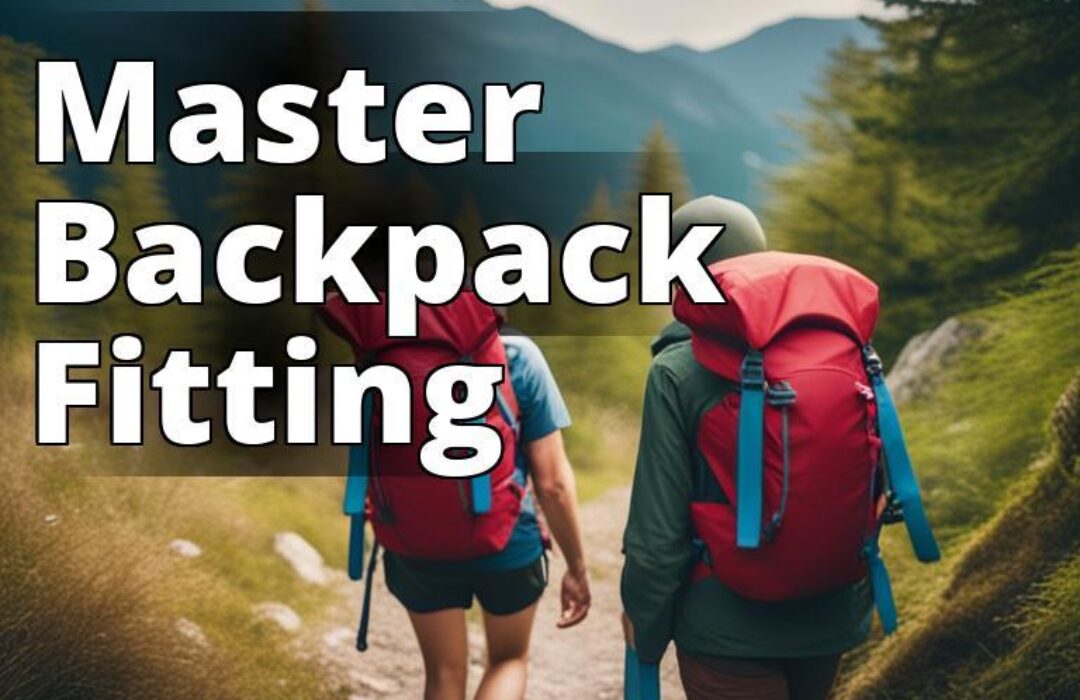Are you planning a camping trip but don’t know how to wear a camping
Learn the best tips and tricks for wearing a camping backpack comfortably during a hike, including:
– Adjusting the straps and hip belt for a secure and balanced fit
– Distributing weight evenly and strategically throughout the pack
– Packing the backpack in a way that reduces strain on the body and allows for easy access to essential items

Choosing the Right Backpack
Choosing the right
Ensure that the

Adjusting the Backpack
| Type of Backpack | Features |
|---|---|
| Daypack | Suitable for short hikes or day trips. Usually has a capacity of 20 to 35 liters. Has enough space to carry essentials like water, snacks, and a first-aid kit. |
| Overnight Backpack | Suitable for overnight camping trips. Has a capacity of 30 to 50 liters. Has enough space to carry a sleeping bag, tent, and cooking gear. |
| Weekend Backpack | Suitable for weekend camping trips. Has a capacity of 50 to 60 liters. Has enough space to carry food, water, clothes, and camping gear. |
| Expedition Backpack | Suitable for multi-day and extended trips. Has a capacity of 70 liters or more. Has enough space to carry all the necessary gear for extended trips. |
Adjusting the
-
Adjust the Shoulder Straps: The shoulder straps should be snug but not too tight. If the straps are too loose, the
backpack will sag, and if they’re too tight, they’ll dig into your shoulders. -
Adjust the
Hip Belt : Thehip belt should sit snugly on your hips, taking some of the weight off your shoulders. Adjust the tension of thehip belt until the majority of the weight is on your hips. -
Adjust the Sternum Strap: Adjust the sternum strap until it’s comfortable, but not too tight. This strap connects the shoulder straps and helps stabilize the
backpack , distributing weight more evenly.

Packing the Backpack
Packing a camping
-
Distribute the Weight Evenly: Pack the heaviest items closest to your back to prevent the
backpack from pulling you backward and causing discomfort. -
Use
Compression Straps :Compression straps are essential in keeping the weight close to your back, ensuring a comfortable and stable fit.
The Importance of Proper Backpack Fit: A Personal Story
When I first started hiking, I didn’t think much about the fit of my
She helped me adjust my
Since then, I’ve made sure to always take the time to properly adjust my

Additional Tips and Tricks
Here are some additional tips and tricks to keep in mind when wearing a camping
- Wear comfortable, moisture-wicking clothing to prevent chafing and discomfort.
- Use a hydration system to stay hydrated during your hike.
- Use the backpack’s external pockets for easy access to frequently used items.
- Adjust the backpack as needed during your hike to ensure a comfortable fit.
- Take breaks frequently to rest and relieve any discomfort.
Personal Experience
As an avid camper, I have learned the importance of wearing a camping
Conclusion
Wearing a camping
Frequently Asked Questions
Question: Who can wear a camping backpack?
Answer: Anyone who is going camping or hiking can wear a
Question: What should I consider when choosing a backpack?
Answer: Consider the size, weight, and features of the
Question: How do I properly adjust my backpack for comfort?
Answer: Adjust the straps,
Question: What should I pack in my camping backpack?
Answer: Essential items include a tent, sleeping bag, food, water, and a first aid kit.
Question: How do I distribute the weight in my backpack?
Answer: Pack heavier items closer to your back and lighter items towards the top.
Question: What if my backpack feels uncomfortable?
Answer: Adjust the straps and weight distribution or consider a different
William is an experienced hiker and outdoor enthusiast with over a decade of experience in
backpack ing. He has completed numerous multi-day hikes and has always been interested in the technical aspects of hiking gear. He has extensively researched and tested variousbackpack s, learning about the importance of proper fit, weight distribution, and packing techniques.William has also experienced the consequences of improper
backpack ing. While on a multi-day hike, he developed back pain due to an ill-fittingbackpack . This experience motivated him to learn more aboutbackpack ing and led him to develop his techniques for a comfortable and enjoyable hike.Additionally, William has studied various studies and sources on the topic of
backpack ing and outdoor activities. He has been published in several outdoor magazines and blogs, sharing his knowledge and tips with fellow hikers. His expertise in the field ofbackpack ing has made him a reliable source of information for novice and experienced hikers alike.




